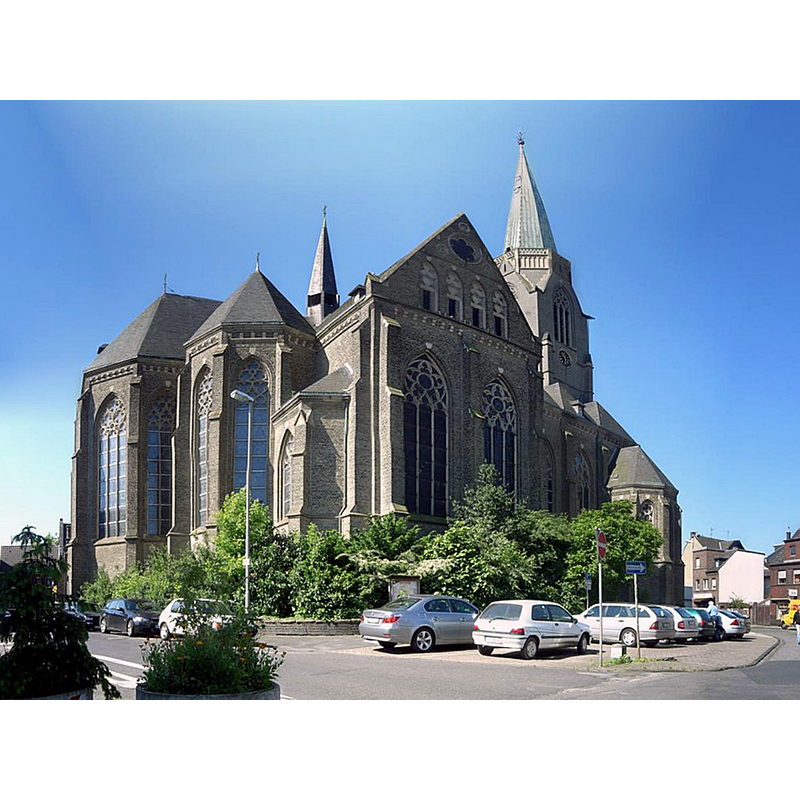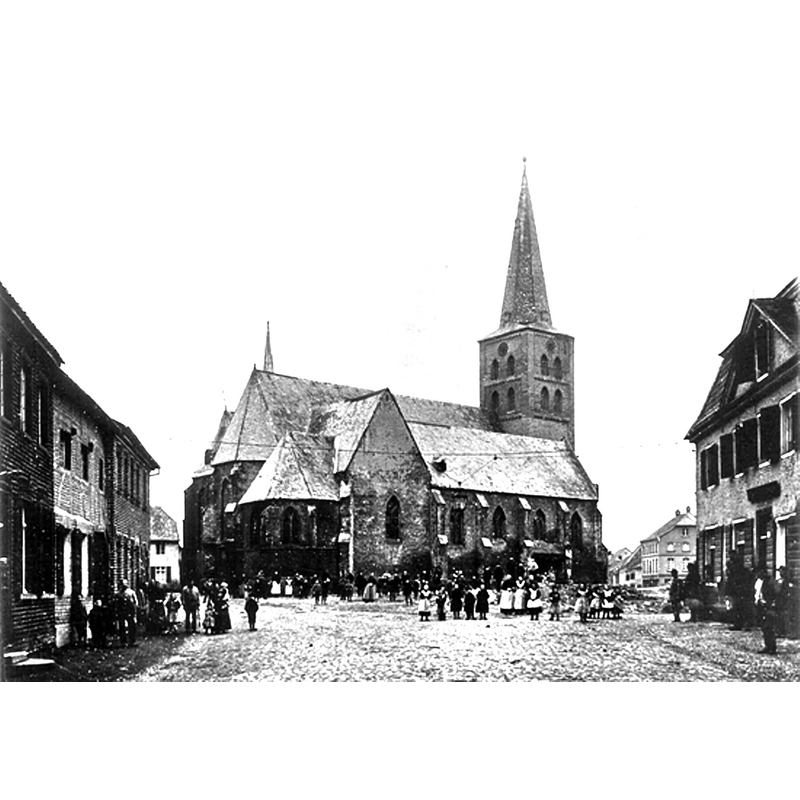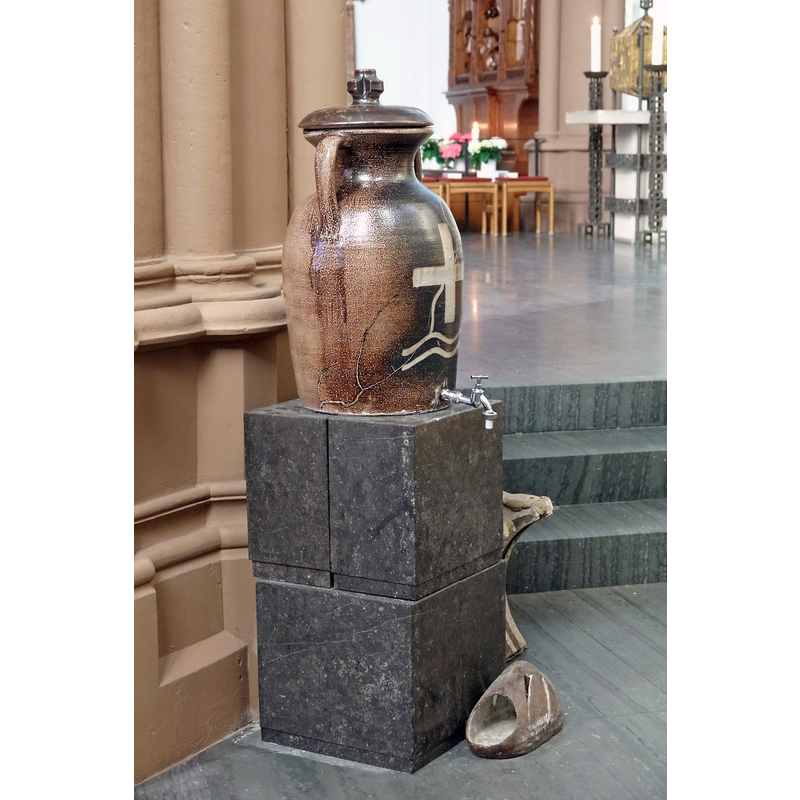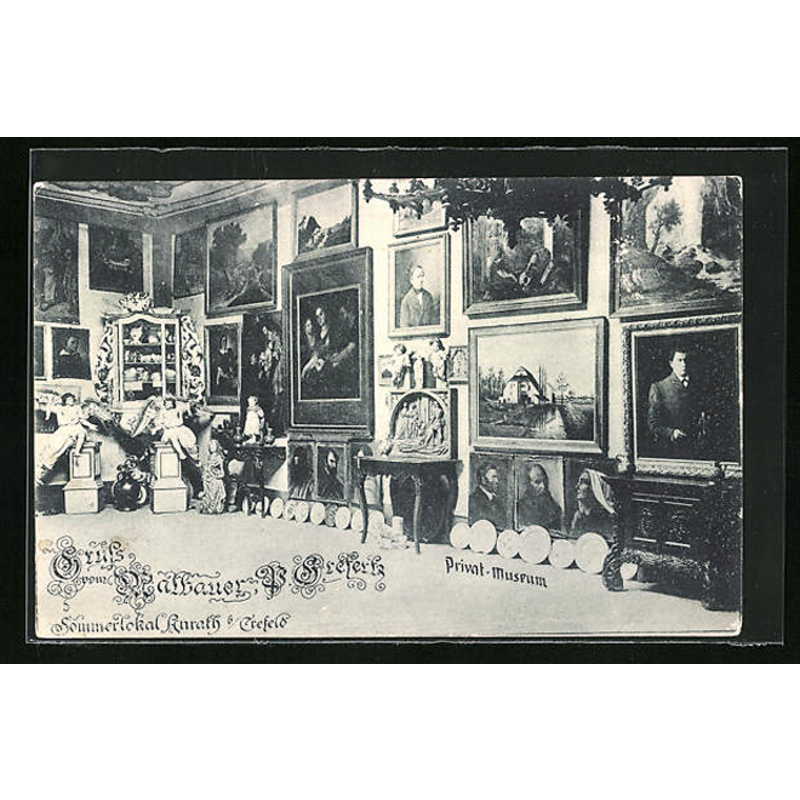Anrath
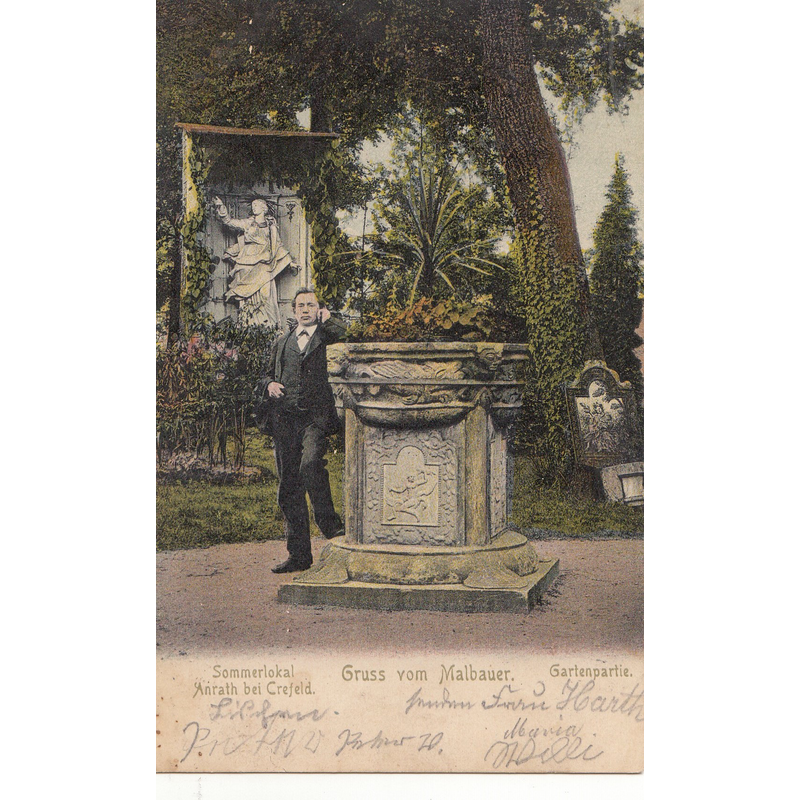
Image copyright © [in the public domain]
Assumed PD
Results: 12 records
animal - fabulous animal or monster - dragon - passant
Copyright Statement: Image copyright © Staatliche Museen zu Berlin, Skulpturensammlung und Museum für Byzantinische Kunst / Dr. Tobias Kunz, 2024
Image Source: digital photograph Staatliche Museen zu Berlin, Skulpturensammlung und Museum für Byzantinische Kunst / Dr. Tobias Kunz [https://id.smb.museum/object/869536] [accessed 18 January 2024]
Copyright Instructions: CC-BY-SA-4.0
human figure - fead - 4
Scene Description: one of the four is now missing
Copyright Statement: Image copyright © Staatliche Museen zu Berlin, Skulpturensammlung und Museum für Byzantinische Kunst / Dr. Tobias Kunz, 2024
Image Source: digital photograph Staatliche Museen zu Berlin, Skulpturensammlung und Museum für Byzantinische Kunst / Dr. Tobias Kunz [https://id.smb.museum/object/869536] [accessed 18 January 2024]
Copyright Instructions: CC-BY-SA-4.0
view of basin
Scene Description: as displayed in the Berliner Museum für Byzantinische Kunst -- the restoration of the much-damaged upper rim probably took place long before its acquisition by the Museum
Copyright Statement: Image copyright © Staatliche Museen zu Berlin, Skulpturensammlung und Museum für Byzantinische Kunst / Dr. Tobias Kunz, 2024
Image Source: digital photograph Staatliche Museen zu Berlin, Skulpturensammlung und Museum für Byzantinische Kunst / Dr. Tobias Kunz [https://id.smb.museum/object/869536] [accessed 18 January 2024]
Copyright Instructions: CC-BY-SA-4.0
view of basin and cover
Scene Description: Source caption: "St. Johannes Baptist (Anrath): Blick in die Kirche" -- showing the top of the basin od the modern [1879?] font installed in the new church
Copyright Statement: Image copyright © Rudolfo42, 2020
Image Source: digital photograph 11 April 2020 by Rudolfo42 [https://commons.wikimedia.org/wiki/File:2020_04_11_St._Johannes_Baptist_(Anrath)_(40).jpg] [accessed 18 January 2024]
Copyright Instructions: CC-BY-SA-4.0
view of church exterior
Scene Description: Source caption: "Kirche in Anrath, Deutschland"
Copyright Statement: Image copyright © Ichmichi, 2007
Image Source: digital photograph 30 May 2007 by Ichmichi [https://commons.wikimedia.org/wiki/File:Anrath_kirche.jpg] [accessed 18 January 2024]
Copyright Instructions: GFDL / CC-BY-SA-3.0-migrated
view of church exterior in context - northeast viw
Scene Description: showing the old church in 1896, just before its demolition
Copyright Statement: Image copyright © [in the public domain]
Image Source: digital image of an 1896 B&W photograph reproduced in [https://anrath.files.wordpress.com/2020/04/230-malbauer-1905.jpg] [accessed 18 Jamuary 2024]
Copyright Instructions: Assumed PD
view of church interior - holy-water tank
Scene Description: Source caption: "St. Johannes Baptist (Anrath): Blick in die Kirche"
Copyright Statement: Image copyright © Rudolfo42, 2020
Image Source: digital photograph 11 April 2020 by Rudolfo42 [https://commons.wikimedia.org/wiki/File:2020_04_11_St._Johannes_Baptist_(Anrath)_(41).jpg] [accessed 18 January 2024]
Copyright Instructions: CC-BY-SA-4.0
view of church interior - looking west
Scene Description: Source caption: "St. Johannes Baptist: Blick vom Altarraum in die Kirche"
Copyright Statement: Image copyright © Rudolfo42, 2020
Image Source: digital photograph 11 April 2020 by Rudolfo42 [https://commons.wikimedia.org/wiki/File:2020_04_11_St._Johannes_Baptist_(Anrath)_(15).jpg] [accessed 18 January 2024]
Copyright Instructions: CC-BY-SA-4.0
view of context
view of font in context
Scene Description: Source caption: "Taufstein 1905 im Garten des Privatmuseums" -- in the Malbauer Family gardens, before its acquisition by the Berlin museum -- notice the later upper base on which the Romanesque basin was mounted; was the lower base the original? or in-the-style-of?
Copyright Statement: Image copyright © [in the public domain]
Image Source: digital image of a 1905 photograph reproduced in [https://anrath.files.wordpress.com/2020/04/230-malbauer-1905.jpg] [accessed 18 Jamuary 2024]
Copyright Instructions: Assumed PD
INFORMATION
FontID: 25271ANR
Object Type: Baptismal Font1
Museum and Inventory Number: at present in the Berliner Museum für Byzantinische Kunst
Church/Chapel: Katholische Pfarrkirche St. Johannes Baptist
Church Patron Saints: St. John the Baptist
Church Location: Kirchpl. 7, Anrath, 47877 Willich, Germany
Country Name: Germany
Location: Viersen, Nordhein-Westfalen
Directions to Site: Located off (W) the Bd44, in the municipality and 6 km WNW of Willich, about 25 km WNW of Düsseldorf
Font Location in Church: [in a museum now]
Date: n.d.
Cognate Fonts: font in the Schnütgen Museum in Cologne (inv. K 112), which may come from St. Kolumba [cf. FontNotes]
Credit and Acknowledgements: We are grateful to Pol Herman for bringing this font to our attention and for his help in documenting it
Church Notes: medieval church documented 1010; re-built 12thC; demolished 1897; new church of 1898
Font Notes:
Click to view
A baptismal font from Anrath is noted in Tollenaere (1957). The Kirchbauverein St. Johannes Baptist Anrath e.V. [https://www.kirchbauverein-anrath.de/] [accessed 18 January 2024] writes about Pol Herman's investigations related to a font made of Meuse or Scheldt limestone that is located at present in the Berliner Museum für Byzantinische Kunst, but which Pol Herman traced to a private collection and all the way back to the Katholische Pfarrkirche St. Johannes Baptist in Anrath. Herman makes reference to a very informative 1949 piece by Gottfried Kicker [https://anrath.wordpress.com/abbruch-der-alten-kirche/] [accessed 18 January 2024] which contains illustrations of the old church just before its demolition in 1896-1897, and the sad handling of the liturgical objects and furnishings of the old church by the authorities; the medieval font itself ended in the hands of a private collector, the Malbauer family, in whose mini-museum garden the font is proudly displayed in a 1905 photograph. Further investagions by Pol Herman ended in the identification of the Anrath font with one acquired in 1918 by the Berlin museum "en cadeau du commerce d'art de Cologne (Peter Jos. Worms)". The Museum entry [https://id.smb.museum/object/869536] [accessed 18 January 2024] dates the font to ca. 1150, records the measurements [Höhe: 46 cm. Breite: 122,5 cm. Tiefe: 131 cm. Durchmesser: 115 cm] and notes: "Es handelt sich um eine runde, relativ flache und auffallend breite Kuppa eines Taufsteins mit figürlicher Darstellung. Der stark beschädigte und weitgehend erneuerte obere Rand der Kuppa ist grob durch eine Hohlkehle profiliert, die in regelmäßigem Abstand von vier Männerköpfen (einer fehlt) unterbrochen wird. Unter diesen ragt jeweils – als Verlängerung der ursprünglich dort ansetzenden vier kleineren Säulen – eine Blattzunge vom leicht eingezogenen unteren Rand nach oben. Die Fläche zwischen den Köpfen wird von je einem Drachen eingenommen, der seine Vorderkrallen auf einem die gesamte Kuppa umziehenden Grat legt. Die vier Köpfe in Verlängerung der Säulen sind sicher als Symbol der vier Paradiesflüsse zu verstehen, die zum festen Darstellungskanon an Taufbecken gehören. Drachen sind als Symbol des Bösen gleichfalls ein geläufiges Motiv an Fünten und verweisen vor allem auf dessen Überwindung durch die Taufe bzw. den Kampf zwischen Himmel und Hölle um die Seelen der noch nicht Getauften und somit auf ein zentrales Thema der Taufliturgie. Taufbecken als Schauplatz des Sakraments der Taufe gehörten notwendigerweise zur primären Ausstattung einer mittelalterlichen Kirche mit Pfarrechten. Sie standen in der Regel in der Nähe des Eingangs, manchmal in eigenen Räumen, etwa im Untergeschoss des Westturms. In bestimmten Regionen, wie Gotland, wo zunächst Westtürme nicht üblich waren, standen Taufen im Zentrum der Landkirchen, auf Höhe des Eingangs an der Langhaussüdwand, und konnten auch in andere Liturgien einbezogen werden. Die sehr hohe Zahl erhaltener Objekte und ihre häufig ins 12. und 13. Jahrhundert datierbare Entstehungszeit zeigen, dass man die schwer bewegbaren Objekte – anders als etwa Altäre und Retabel – oft auch dann beibehielt, wenn die Kirche umfassend erneuert wurde. Wie der markante bläulich-schwarze Stein, aber auch die Gestalt des Taufsteins zeigen, entstand der Taufstein im mittleren Maastal, wo vor allem in Namur eine große Zahl solcher Objekte besonders im 12. Jahrhundert auch für den Export geschaffen wurde. Die Berliner Variante mit vier Drachen und vor allem vier Köpfen am oberen Rand findet sich allerdings recht häufig. Stilistisch mit dem Berliner Stück vergleichbar ist ein Taufstein im Kölner Museum Schnütgen (Inv. K 112), der möglicherweise aus St. Kolumba stammt." The Museum entry gives Tobias Kunz, Bildwerke nördlich der Alpen. 1050 bis 1380. Kritischer Bestandskatalog der Berliner Skulpturensammlung, Petersberg, Michael Imhof Verlag 2014) as source. The surviving basin of the font is displayed in the Museum without the former base [cf. ImagesArea]
COORDINATES
Church Latitude & Longitude Decimal: 51.278378, 6.463015
Church Latitude & Longitude DMS: 51° 16′ 42.16″ N, 6° 27′ 46.85″ E
UTM: 32U 323061 5683839
MEDIUM AND MEASUREMENTS
Material: stone, limestone
Notes on Measurements: [cf. FontNotes]
REFERENCES
Tollenaere, Lisbeth, "La sculpture sur pierre dans l'ancien diocèse de Liége à l'époque romane", 4e Série, Fascicule II., Recueil de Travaux d'Histoire et de Philologie, 1957
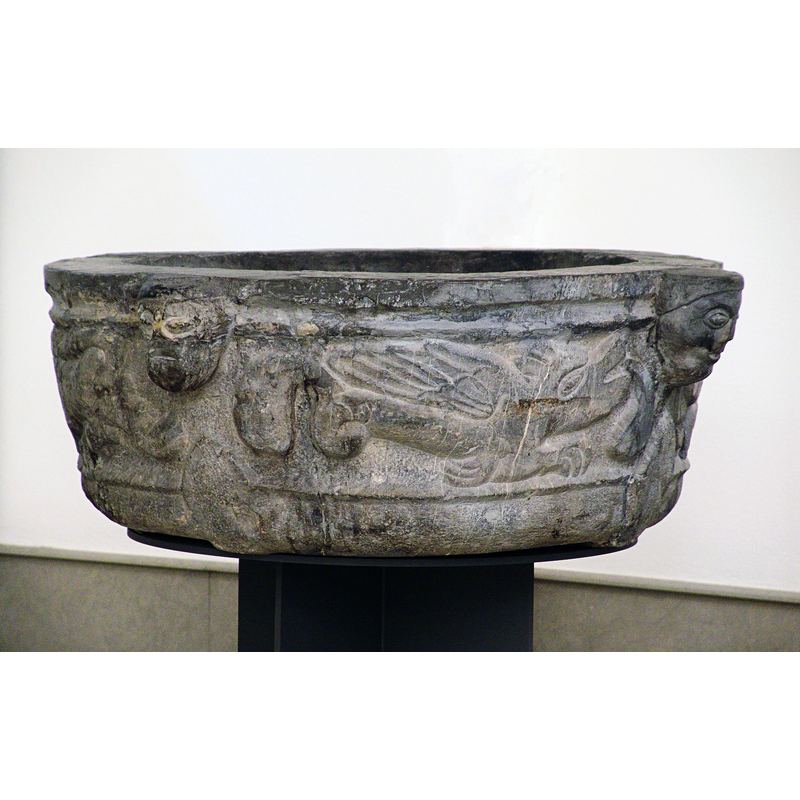

![Source caption: "St. Johannes Baptist (Anrath): Blick in die Kirche" -- showing the top of the basin od the modern [1879?] font installed in the new church](/static-50478a99ec6f36a15d6234548c59f63da52304e5/compressed/1240118001_compressed.png)
